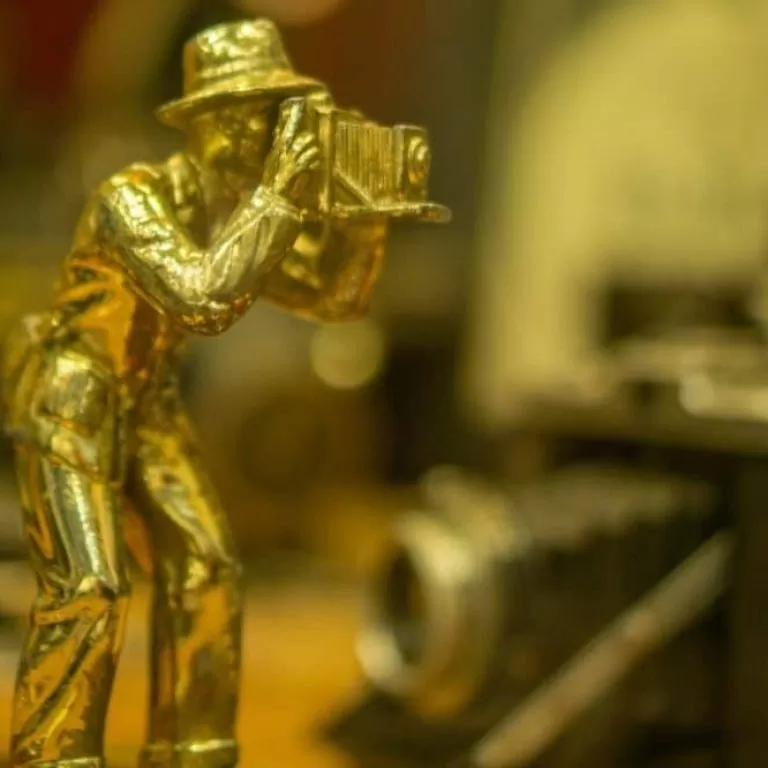
News Evolution of photography – pioneers of the medium
The evolution of photography has a complex and interesting history.
In a previous blog, we briefly traced the evolution of significant ‘photographic firsts’, uncovering the progression made from some of the earliest forms of photography to the most recent.
We go on a similar journey through the past in this blog and take a closer look at the work of other pioneers in this field.
William Henry Fox Talbot (1800-1877)
We begin with the so-called British ‘father of photography’, William Henry Fox Talbot, who took the first photographic negative from the window of his home in Wiltshire, in 1853. The subjects in the photograph, a group of fruit sellers, were required to hold their pose for up to ten seconds to ensure that the shot could be captured.
Recent efforts by academics at the University of Oxford, to preserve the important work of this pioneer, emphasises the continued relevance of his legacy on the technology that we often take for granted in our digital age.
Some of the earliest photographs ever to have been taken are credited to Fox Talbot and are now available to view on a new website produced by the Bodleian Libraries at the prestigious university. Aiming to bring together his complete works, more than 1,000 photographs are currently online, with the collection expected to grow to 25,000 images by 2018.
Fox Talbot created more than 4,500 images from over 25,000 negative prints that are thought to still exist. Working in Britain during the Victorian period, it was Fox Talbot who established the methods of developing, fixing, and printing using paper coated with silver iodide – now considered to be the primary elements of the early photographic process.
The new website, named the Talbot Catalogue Raisonne, is still in its beta stage but new additions and revisions will be continuous to ensure its growth. The site stands as a vital resource, bringing together specific biographies, bibliographies, and case studies about Fox Talbot and his life, along with relevant information regarding the wider context of early photographic history.
Anna Atkins (1799-1871)
Fox Talbot’s influence was far-reaching in terms of the implications it had on others working in different fields. Considered as the first woman photographer, Anna Atkins met Fox Talbot through his friendship with her father. Studying botanology (the study of plants), Atkins adapted the cyanotype technique (a photographic printing process that produces a cyan-blue print), to aid her in her scientific research.
In 1843, Atkins published the first serialised book illustrated with photographs. Her seminal work, entitled British Algae: Cyanotype Impressions, is arguably the first example of photography used for academic purposes. Specialising in photograms of stark silhouettes of plant specimens against a blue background, Atkins’ images were also accompanied by her own handwritten text.
Her legacy remains significant, particularly because she studied at a time when it was extremely difficult for women to have access to science and education in general.
Her work is still remembered worldwide, and 150 years following her book’s publication, photographer Anton Corbijn paid homage to her work as part of the CD artwork for single Enjoy The Silence, by English electronic band Depeche Mode.
Henri Cartier-Bresson (1908-2004)
We continue through to the next decade to the work of French humanist photographer, Henri Cartier-Bresson. Considered another ‘father of photography’, Bresson coined the term ‘the decisive moment’ as part of the reportage style of image capture that he pioneered.
Photojournalism was thought to begin with Bresson, initiated by his work covering the coronation of King George VI and Queen Elizabeth in 1937. Taking no photographs of the King himself, Bresson’s work focused instead on the crowds of people lining the streets. Published in the French weekly magazine Regards, this collection kick-started his career and remains among his most notable work.
Principally using an image to tell the story of an event, photojournalism delivers news in a creative format that can be entertaining but ultimately for the purposes of presenting information. Candid photography can be considered as photojournalism in its purest form, as it aims to capture ‘the decisive moment’ or people living in the moment. Bresson’s work set out to blur the lines between these two photographic practices.
Using a Leica camera with a 50mm lens for many years, the small size of the camera allowed him to be inconspicuous in a crowd to ensure the serendipity of a moment as his subjects remained unaware of the presence of the camera.
In 1952, Bresson published his book The Decisive Moment which detailed his work on candid photography. The book included a portfolio of 126 of his photographs as well as preface, in which he stated, “to me, photography is the simultaneous recognition, in a fraction of second, of the significance of an event as well as of a precise organisation of forms which give that event its proper expression.���
Bresson’s life and career was rich and varied. As well as starring in films by renowned French director Jean Renoir, he also served in the French Army in World War II as a Corporal in the Film and Photo unit.
He spent 35 months in a prisoner-of-war camp having been captured in 1940. Following three attempts he eventually escaped and worked as part of the underground efforts to help other escapees and as a photographer covering the Occupation and the then Liberation of France.
With so much technology at our finger tips in the digital age, it is almost impossible to believe that the art form of photography is barely two centuries old. Looking back to the creative endeavours of some of the pioneering individuals, it is clear to see that their work lives on, not only in digital archives, books, and their biographies, but in the practices that have become part of our everyday.